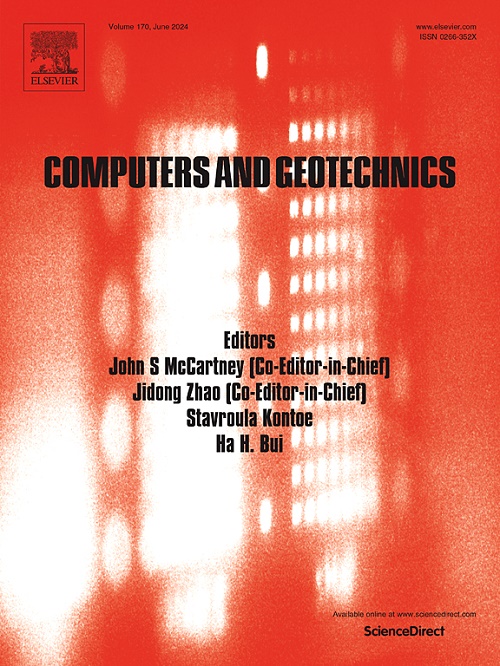A coupled thermo-hygro-mechanical peridynamic model for mechanism analysis of soil desiccation cracking
IF 5.3
1区 工程技术
Q1 COMPUTER SCIENCE, INTERDISCIPLINARY APPLICATIONS
引用次数: 0
Abstract
Soil desiccation cracking, a natural phenomenon involving the complex interaction of multi-physical fields, significantly weakens the mechanical and hydraulic properties of soil, potentially leading to natural hazards. This study proposes a coupled thermo-hygro-mechanical peridynamic (PD) model to investigate the mechanical responses and fracture behaviors in saturated soils due to moisture evaporation and heat transfer. Specifically, the temperature-dependent moisture diffusion and moisture-dependent heat conduction equations are nonlocally reformulated using peridynamic differential operators (PDDO). The constitutive model incorporates the spatial attenuation of nonlocal interactions and the effects of moisture and temperature in the bond-based peridynamic framework. Utilizing a hybrid explicit–implicit solution strategy, the model can effectively capture soil strip detachment, cracking, and curling. The model is also employed to explore moisture transmission mechanisms, evaluate the effects of temperature and thickness on crack morphology, and reveal the relationship between stress, strain evolution, and crack propagation. Furthermore, the model incorporates the reference evapotranspiration formula, which can account for environmental factors such as solar radiation, ambient temperature, relative humidity, and wind speed. Therefore, this expands the scope of model applicability and enables the simulation of soil desiccation cracking under natural conditions.
求助全文
约1分钟内获得全文
求助全文
来源期刊

Computers and Geotechnics
地学-地球科学综合
CiteScore
9.10
自引率
15.10%
发文量
438
审稿时长
45 days
期刊介绍:
The use of computers is firmly established in geotechnical engineering and continues to grow rapidly in both engineering practice and academe. The development of advanced numerical techniques and constitutive modeling, in conjunction with rapid developments in computer hardware, enables problems to be tackled that were unthinkable even a few years ago. Computers and Geotechnics provides an up-to-date reference for engineers and researchers engaged in computer aided analysis and research in geotechnical engineering. The journal is intended for an expeditious dissemination of advanced computer applications across a broad range of geotechnical topics. Contributions on advances in numerical algorithms, computer implementation of new constitutive models and probabilistic methods are especially encouraged.
 求助内容:
求助内容: 应助结果提醒方式:
应助结果提醒方式:


